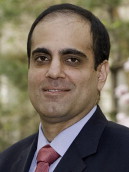
Reconstruction of the urinary tract is a mainstay of urologic practice. While we often define reconstructive surgery as a procedure specifically intended to correct a pre-existing problem, the surgical principles arising from our reconstructive procedures can and should influence the vast majority of procedures performed in urology. Reconstructive principles can be applied in oncologic procedures requiring reconstruction following extirpation, general urologic procedures, correction of congenital abnormalities, and in the management of complications arising from urologic surgery.
Similarly, the management of genitourinary trauma offers insight into the management of common challenges arising from renal surgery, lower urinary tract surgery, and secondary surgical complications. We can learn a great deal, for example, on how to manage partial nephrectomy complications through the observation of our colleagues experienced with both penetrating and blunt renal trauma. While many urologists in practice do not manage acute trauma, almost all are exposed to iatrogenic trauma arising from both urologic and nonurologic surgical procedures.
In this issue, Dr Allen Morey and Dr Steven Hudak have crafted a comprehensive look into the contemporary management of urologic trauma and the strategies for reconstruction of traumatic sequelae. I am deeply indebted to Drs Morey and Hudak for insight into the design of this issue and oversight in its creation. Each of the authors has provided a unique perspective to the principles of reconstruction as they may be applied in different regions of the urinary tract, and in both the acute and the delayed setting. I would like to thank each of the authors for these fantastic articles. I urge the readers to absorb the concepts to take back to everyday practice.
Stay updated, free articles. Join our Telegram channel

Full access? Get Clinical Tree






